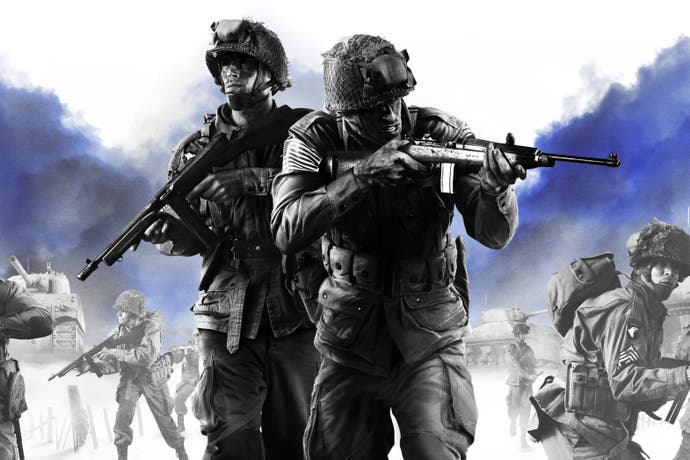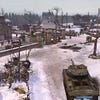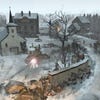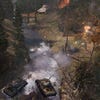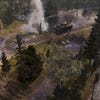Relic's five-year plan for Company of Heroes 2
But what's happening with Dawn of War?
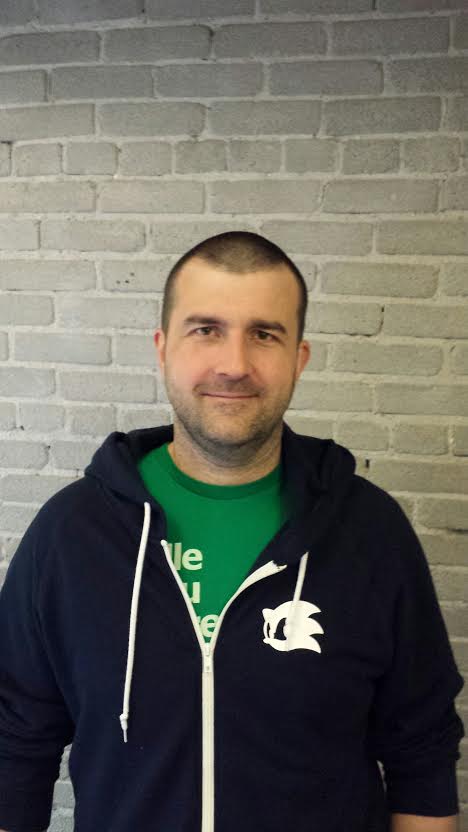
Relic Entertainment has a five-year plan for World War 2 real-time strategy game Company of Heroes 2, a plan that includes a raft of expansions, updates and - potentially - new armies.
The successful launch of the game established COH2 as a platform, Relic says, which can be used to release new content to its loyal, active audience for years to come. It's all part of this transition we hear so many developers talk about: to games as a service.
Relic has already released 20 updates for COH2 (at the same point in COH1's life it had released eight). But the game's first major expansion arrives with next month's launch of the standalone multiplayer The Western Front Armies, which Relic has been working on since COH2 released in June 2013. It adds two new armies, the US Forces and the German Oberkommando West, eight new maps and, crucially for multiplayer enthusiasts, new strategies.
For example, the US Forces are versatile, flexible, mobile and upgradeable. They have the Paratroopers, which can drop in anywhere on the map, and the ability to paradrop the M1 75mm anti-tank gun, which can be manned by allied infantry, and the 50cal M2HB heavy machine gun, which tears apart groups of enemy infantry.
One of the US Forces' particularly devastating abilities is the P-47 rocket strafe, which calls in a P-47 Thunderbolt to patrol an area and attack vehicles on sight with a high velocity rocket strike. The thing with the US Forces is they can adapt to any situation they face. I was able to upgrade one squad of troops by having them physically take new weapons, including bazookas and the BAR rifle, from a weapon rack back at home base. The new vehicle de-crew feature is exclusive to the US, too.
The German Oberkommando West, however, are battle-hardened German veterans who use the heaviest armour around. Their tanks are high cost, but incredibly tough and pack one hell of a punch. In terms of strategy, the Germans benefit from a unique resource system that revolves around breakthrough tactics.
One low-cost ability makes infantry push through enemy lines and capture enemy territory more quickly. The Panzer Fusiliers are light infantry that can recon territory, and the Sturm Offizier inspires troops to fight harder. The Supply Halftrack can be positioned on captured territory in order to generate more resource or income (the infra-red Halftrack can see into the fog of war). Here's the trick: the Oberkommandos can convert resources as you see fit - perhaps you want to convert munitions to fuel, or vice versa - giving the army a flexible resource system that is unique.
As the German Oberkommando West, you want to use abilities such as the Assault Artillery to barrage a target area with high explosive shells followed by a smokescreen, then push forward with your infantry and tanks. Speaking of tanks, the Jagdtiger is just about the most devastating tank in the game. Just be aware of its painfully slow turning circle.
The expansion's armies add new strategies to COH2, and play significantly differently to warrant investigation. But I get the impression Relic is more excited by the addition of War Spoils, the new content delivery system that it hopes will fuel the game's success in the future.
War Spoils gives you rewards after each game, including commanders, skins and intelligence bulletins. You can pull three commanders into your loadout before the start of any match, but you can only unlock one during a match. The intelligence bulletins are passive buffs, such as "reload faster". You can bring three of these into a match. The skins do exactly what they say on the tin and make your vehicles look prettier.
War Spoils should keep progression through Western Front Armies interesting, but in the long term Relic will use it to add new content to COH2, hopefully for years to come. This is all part of the five-year plan, director Quinn Duffy told Eurogamer.
"It's a road map," he said. "It's a wish list. But like any plan, it doesn't survive first contact with the enemy. We're planning for things, and then we look at what our community is saying, we look at what our metrics are telling us, and that helps inform our plan. Prioritisation changes. We might pull something forward we thought we would do six months from now, and we do it now instead.
"It's a road map, but it's flexible. We need to be flexible as a company, as a team and as a business to react to the changes in the landscape, and be able to adapt our business, from a business level and even down to a design level and how we build the game.
"It's very exciting to look at it this way and have a sense of what you want to do, and some items on the list you want to cross off. It gets the team behind it. They're excited about upcoming plans and content.
"There's a lot coming."
"It's a road map. It's a wish list."
When THQ went bust, I feared for Relic and for Company of Heroes 2. I worried it would fall by the wayside, the result of mismanagement, a publisher that died trying. Sonic maker Sega, though, swooped in to save the day. It bought the studio and helped it get COH2 ready for release. And the launch of the game appears to have been a success. Duffy tells me the community for COH2 is bigger than the community for COH1 was at the same point in its life. "We're pleased with how it's tracking," he says.
This initial success has fuelled Relic's further investment in the game - somewhat of a chicken and egg situation, Duffy admits, but the developer is rolling with it.
"That shows to the community we're engaged with the game and we're engaged with them," Duffy says. "What players want to see is their time investment and their love of the game is going to be returned to them, that if they're going to invest their time in developing user generated content, there's going to be a market and the game's going to be there long term for them.
"It's a chicken and an egg: we grow a little bit, we try and pull engagement in, they help us grow it and it just sort of snowballs. We try to create that snowball."
Company of Heroes 1, famously, enjoyed a loyal player base for 10 years. But last year it suffered after Relic transitioned the game over to Steamworks. Duffy says a number of players drifted away from Company of Heroes as a result - a situation it's desperate to avoid for COH2.
"We want to make sure we're communicating, that we're letting people know the game is there, that we're going to support it long term," he says. "We want them to know that if they want to be playing this game in years, we're going to be there."
So, what does the five-year plan involve? The Western Front Armies is a multiplayer-focused expansion, but Duffy says new campaign content is on the cards - indeed, the expansion has been designed with that in mind.
"The way we've developed The Western Front Armies gives our campaign designers finished tools to build campaign content," he says. "They're not designing in parallel, which is what we've had to do because of schedule reasons. It's hard to build a campaign and a multiplayer in parallel. Blizzard doesn't do it. They build the multiplayer armies and then the campaign goes off with finished content.
"We've got a great tool set now to build campaign content more effectively than we have in the past, and give the campaign players some really cool stuff. So it's definitely part of our plans."
The obvious next question is, what will be the next new army? I suggest the British deserve their chance, and Duffy chuckles. "We'll see!" he says. "They're a lot of fun to work on. It's stressful. It's challenging. But ultimately armies are a lot of fun to do. To develop them from the ground up, the character and the feel is a really compelling experience as a designer. We definitely want to go through this again."
"We've got a great tool set now to build campaign content more effectively than we have in the past, and give the campaign players some really cool stuff. So it's definitely part of our plans."
Duffy is wearing a shirt with the word "Relic" on the front, but the font used for it is lifted from the classic Sega logo. The studio, clearly, has been fully integrated into the Japanese publisher, and the transition is now complete. Relic is part of the Sega family, sitting neatly alongside fellow strategy specialists The Creative Assembly and Football Manager maker Sports Interactive.
"We've changed I'd say more in the last six or seven months than we have in the last six or seven years," Duffy says. "Ownership. Confidence. Sega leaves the studios to do what they're good at. We looked at it and were like, 'this is ours to own.' People who work there are engaged and excited. I've been there for 16 years, and I'm more excited about the next couple of years than I have been probably any time prior.
"I love the vibe at the studio right now and the feeling. We're pushing boundaries in how we do things. It's really exciting. Marrying that enthusiasm with the long-term plan with Sega's backing... it's been great."
Company of Heroes is as important a part of Relic's future as it has been of its past, but what of Dawn of War? Back when THQ was still a thing, then core games boss Danny Bilson talked up the next entry in the much-loved Warhammer 40K strategy series, but it has yet to materialise.
So what, exactly, is going on with Dawn of War?
Duffy keeps his cards close to his chest, as you'd expect, but he does confirm that the rights to the brand survived the closure of THQ and the transition to Sega and remain with Relic. So, the studio is free to make a new Dawn of War game - if it wants.
But will it? Is a new Dawn of War being worked on?
"I can't say," Duffy replies. "We have a brilliant relationship with Games Workshop. We'd love to do something. It's a no comment on that."
"We have a brilliant relationship with Games Workshop. We'd love to do something. It's a no comment on that."
It's clear Dawn of War remains close to Relic's heart. The studio even has a Dawn of War franchise design lead, Philippe Boulle, who recently served notice that all the Dawn of War games would be transferred to Steam in a bid to keep their multiplayer portions going.
So it's obvious Dawn of War is still alive. And so I press.
"It's a great franchise," Duffy says. "I love the Dawn of War stuff. It's a strong part of our history. Relic has some strong IPs. Dawn of War is almost an IP in of itself. It gave people the feeling they had from the tabletop. It was a great translation of the world. People at Relic play the game, they love it, and they're very sensitive about doing it right."
Given how lacklustre recent Warhammer 40K licensed games have been, fingers crossed someone somewhere deep within the bowels of Relic Entertainment is beavering away on a new game in the Dawn of War series.
Speaking of the bowels of Relic, the studio is currently around 120 people. That's some way short of its 2007/2008 peak of 180, but Duffy says it's growing: "We're in pretty good shape."
Of those 120, between 65 and 70 are working on COH2 content, but the number varies. Relic now develops using what Duffy calls strike teams that build a piece of content from start to finish "so they can invest in it".
120 minus 70 leaves around 50 people - plenty to be doing secret new things, Duffy says. "Teams come and go. Sizes change. We're very flexible."
Like the US Forces, then.
